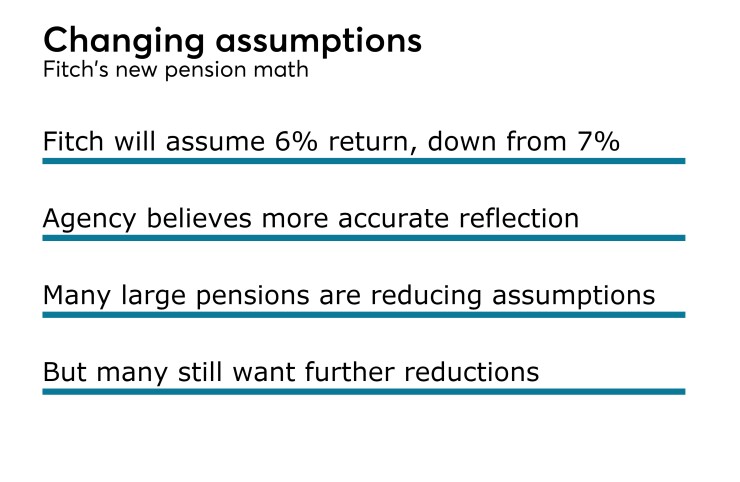PHOENIX - Fitch Ratings will now be discounting pension liabilities at a fixed 6% assumed rate of return, the rating agency said, following a national trend of major pension systems reducing their assumptions to more closely match real market performance.
The investment-return assumption, also known as the discount rate, had previously been set at 7%, right in line with what many of the nation’s largest public pension funds assumed. But weak returns in recent years have placed increased pressure on pension administrators to reduce those rates, and many already have. The California Public Employees' Retirement System, the nation’s largest public pension fund, announced late last year it was reducing its discount rate to 7% from 7.5% over the next three years: a change CalPERS leadership had to defend as critics said said it was still too optimistic.

"U.S. growth has been slower and more incremental over the current economic expansion than over longer time horizons,” said Douglas Offerman a senior director at Fitch. “There is little evidence to suggest the economy will accelerate to previous levels of growth in the near term. Fitch believes that pensions will be hard-pressed to achieve their long-term growth expectations in the current economic context. The 6% return assumption, and increased total pension liability, better reflect the magnitude of the burden posed by pensions."
Pensions have become a matter of increased concern to bond investors after high-profile municipal bankruptcies such as Detroit, in which pensioners experienced better recovery rates than bondholders. Return assumptions are key because they dictate how much money plan participants need to contribute to the plan to keep it funded. Reducing those assumptions increases the contribution burden either on public employees or on issuers, or both.
Some opponents of current pension practices want to go much further. U.S. Rep. Devin Nunes, R- Calif., has introduced legislation that would mandate that plans estimate their funding ratios using the “risk free” U.S. Treasury bond rate of return, a rate far lower than the assumed rates of return used by most retirement plans.
In another change announced in the new criteria, Fitch will compare its existing metric for the carrying cost of long-term liabilities, which relies on the reported actuarially determined contribution for pensions, to a new, supplemental metric that combines a hypothetical annual pension cost. The supplemental metric is designed to highlight outliers where expenditure flexibility can be expected to decrease substantially and unavoidably over time as a result of pensions. Fitch said the criteria adjustments will have “only limited impact” on current ratings because existing assessments already capture Fitch's expectation for rising pension burdens.
The new Fitch criteria update and replace the tax-supported rating criteria released on April 18, 2016.





